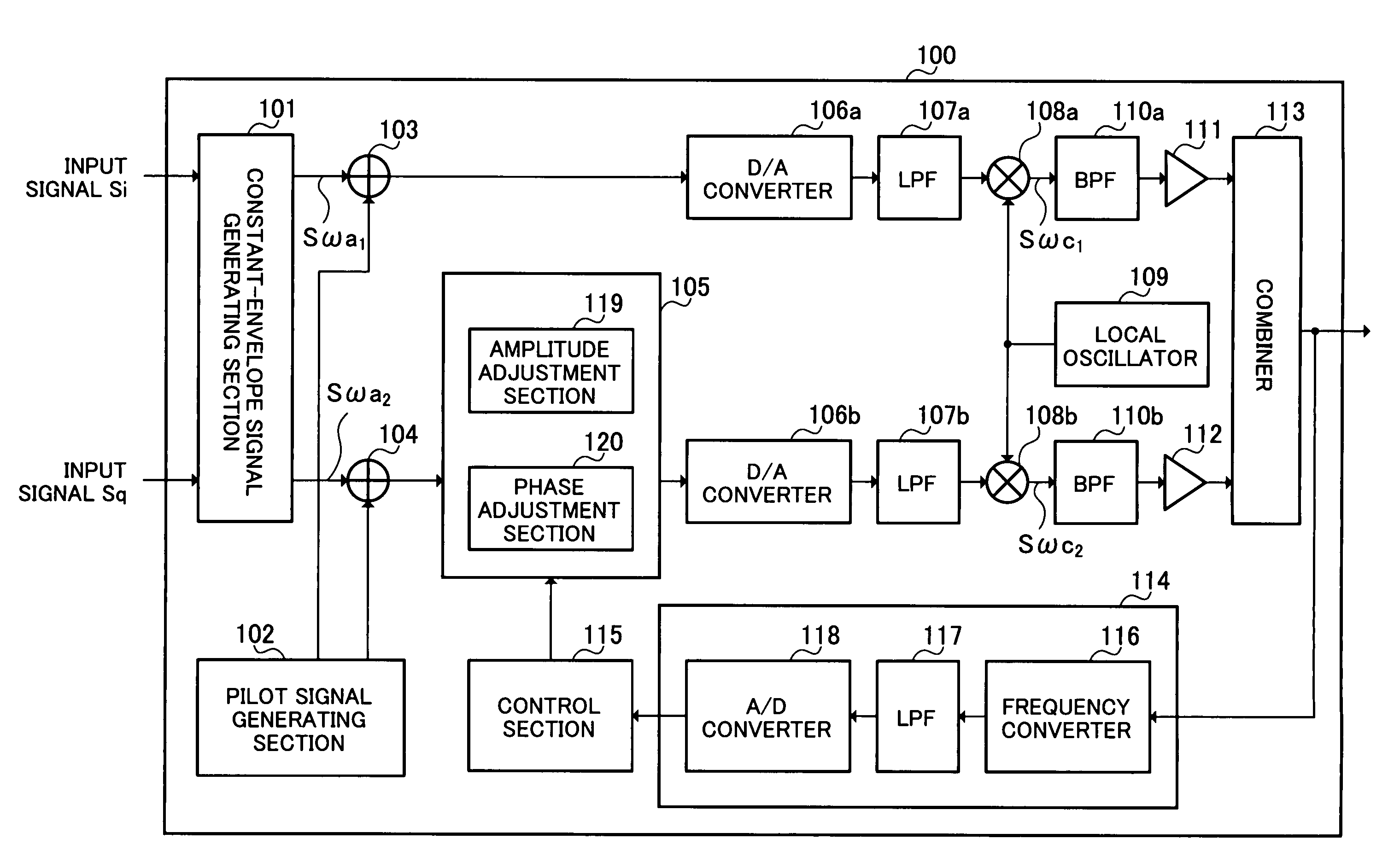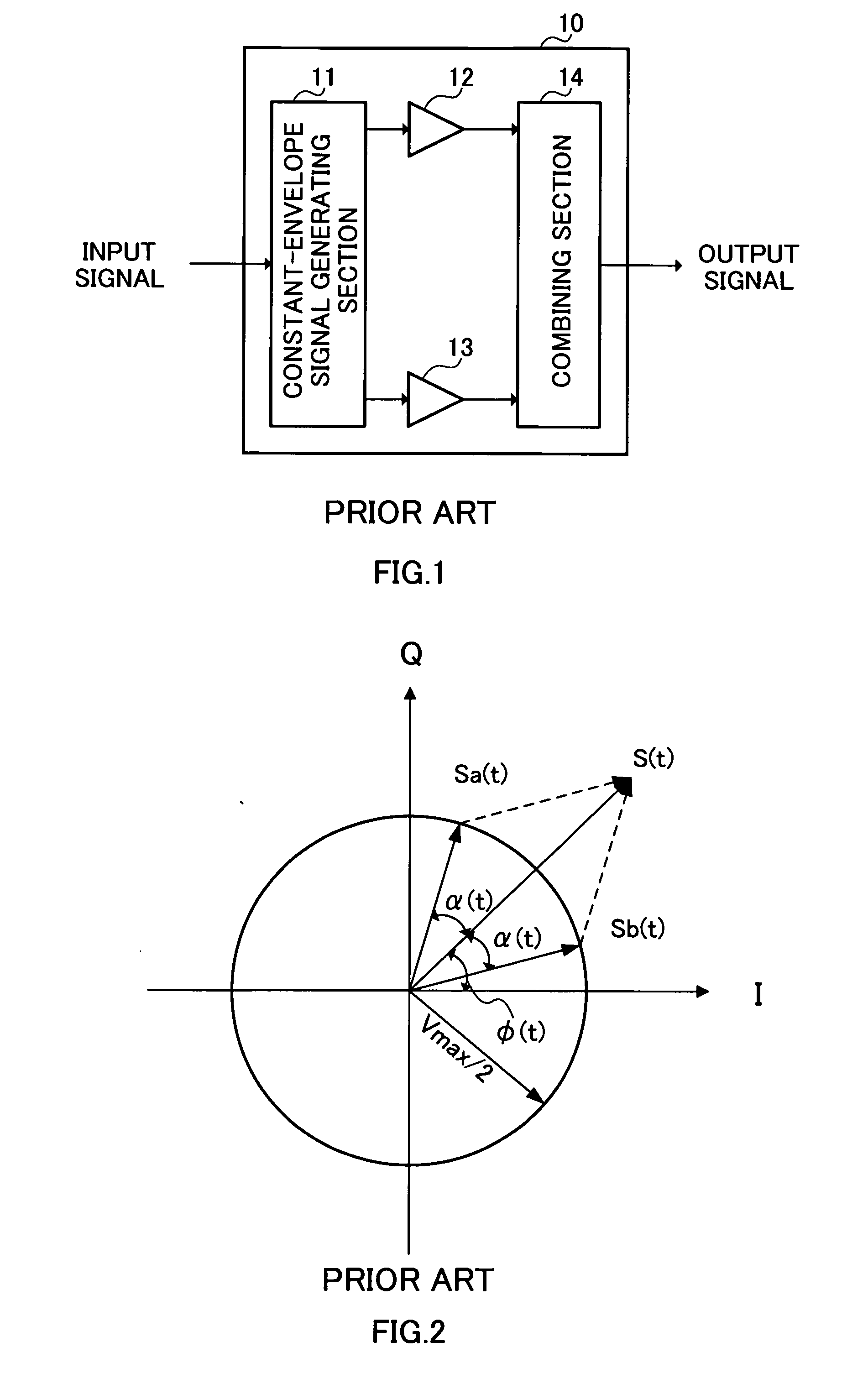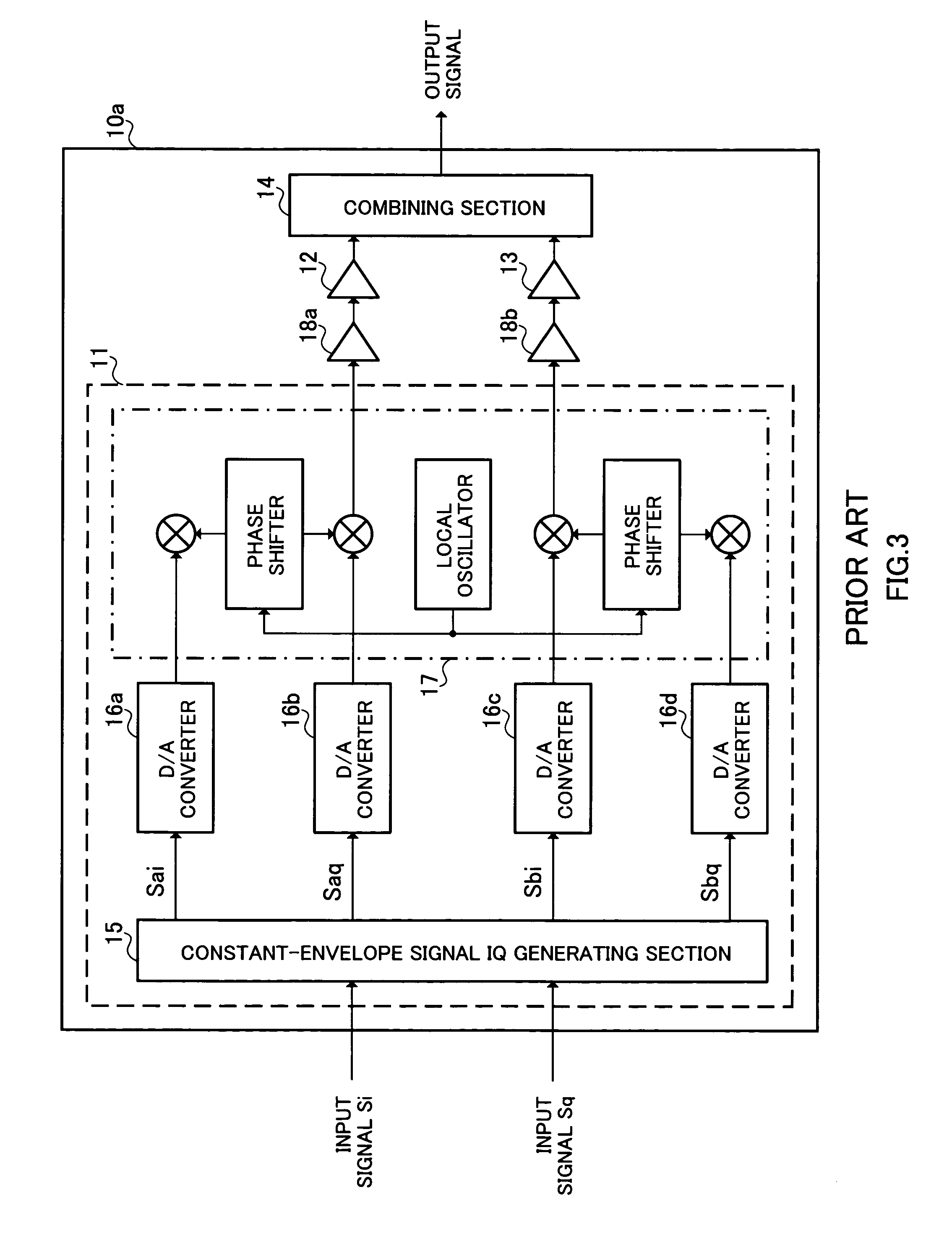Amplifier circuit and amplifying method
a technology of amplifier circuit and amplifier circuit, applied in the direction of amplifier modification to reduce non-linear distortion, digital transmission, baseband system details, etc., can solve the problems of difficult to predict factors, errors may become distortion components of signals, etc., to suppress the circuit scale of amplifier circuit, low distortion, and high power efficiency
- Summary
- Abstract
- Description
- Claims
- Application Information
AI Technical Summary
Benefits of technology
Problems solved by technology
Method used
Image
Examples
first embodiment
[0032] (First Embodiment)
[0033]FIG. 4 is a block diagram showing a configuration for an amplifier circuit of a first embodiment of the present invention.
[0034] Amplifier circuit 100 shown in FIG. 4 comprises constant-envelope signal generating section 101, pilot signal generating section 102, first addition section 103, second addition section 104, vector adjustment section 105, two D / A converters 106a and 106b, two low-pass filters (LPF) 107a and 107b, two mixers 108a and 108b, local oscillator 109, two band pass filters (BPF) 110a and 10b, first amplifier 111, second amplifier 112, combiner 113, pilot signal detector 114, and control section 115.
[0035] Further, pilot signal detector 114 comprises frequency converter 116, LPF 117, and A / D converter 118. Moreover, vector adjustment section 105 comprises amplitude adjustment section 119 and phase adjustment section 120.
[0036] Constant-envelope signal generating section 101 generates two constant-envelope signals, i.e. a first cons...
second embodiment
[0081] (Second Embodiment)
[0082]FIG. 7 is a block diagram showing a configuration for an amplifier circuit of a second embodiment of the present invention. The amplifier circuit of this embodiment has a basic configuration similar to amplifier circuit 100 described in the first embodiment, the same reference numerals are assigned to the same structural elements, and detailed description thereof is therefore omitted.
[0083] Amplifier circuit 200 shown in FIG. 7 has pilot signal generating section 201 in place of pilot signal generating section 102 of amplifier circuit 100 shown in FIG. 4.
[0084] A feature of this embodiment is that two pilot signals are generated in such a manner that pilot signal components cancel each other out after combined in the event that any differences in gain and phase are not generated from respective signals being outputted from first addition section 103 and second addition section 104 until the signals are combined by the combiner 113.
[0085] In the fol...
third embodiment
[0101] (Third Embodiment)
[0102]FIG. 10 is a block diagram showing a configuration for an amplifier circuit of a third embodiment of the present invention. The amplifier circuit of this embodiment has a basic configuration similar to amplifier circuit 100 described in the first embodiment, the same reference numerals are assigned to the same structural elements, and detailed description thereof is therefore omitted.
[0103] Amplifier circuit 300 shown in FIG. 10 adds frequency characteristic correction section 301 to the configuration of amplifier circuit 100 shown in FIG. 4, and adopts a configuration provided with pilot signal detection section 302, control section 303 and pilot signal generating section 304 in place of pilot signal detector 114, control section 115 and pilot signal generating section 102. Further, pilot signal detection section 302 also adopts a configuration where frequency converter 305, LPF 306 and A / D converter 307 are added to the configuration of pilot signal...
PUM
 Login to View More
Login to View More Abstract
Description
Claims
Application Information
 Login to View More
Login to View More - R&D
- Intellectual Property
- Life Sciences
- Materials
- Tech Scout
- Unparalleled Data Quality
- Higher Quality Content
- 60% Fewer Hallucinations
Browse by: Latest US Patents, China's latest patents, Technical Efficacy Thesaurus, Application Domain, Technology Topic, Popular Technical Reports.
© 2025 PatSnap. All rights reserved.Legal|Privacy policy|Modern Slavery Act Transparency Statement|Sitemap|About US| Contact US: help@patsnap.com



